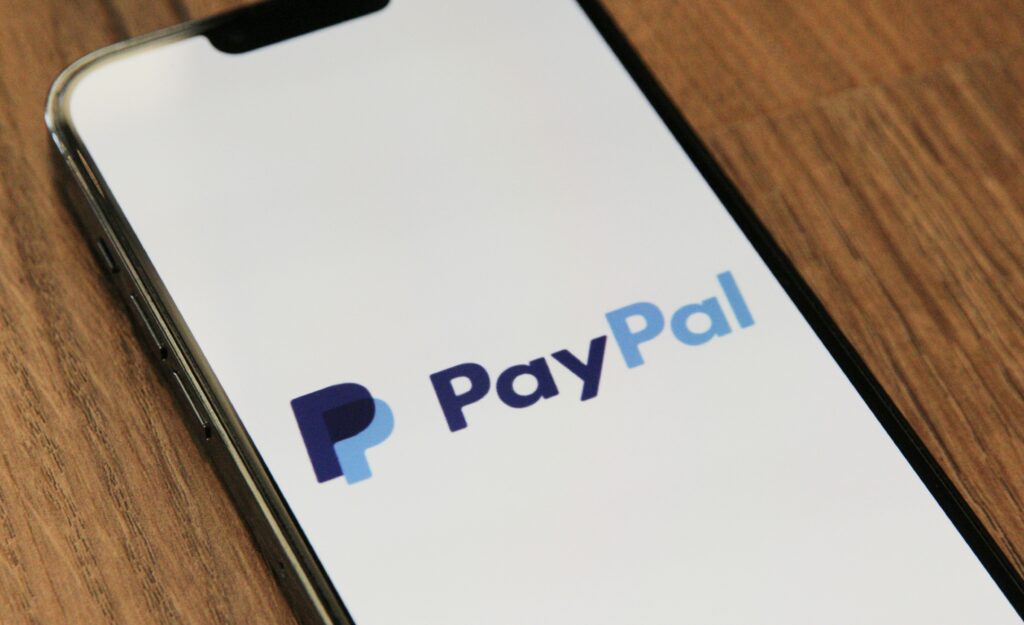Every year the holiday season provides a welcome Q4 sales boost to see out the year. Black Friday traditionally kicks off the holiday shopping season, before e-commerce volumes continue to rise right up until Christmas. But while you’ll rejoice as an online retailer at the sales boom, there is a downside.
When the dust settles in the new year, post-holiday chargebacks start to rear their ugly head. The attack on your holiday sales will come from all angles. From fraudulent purchases made with stolen credit cards to friendly fraud and return fraud. Chargebacks could undo all of the festive success you enjoyed just a couple of months prior.
But fear not. As a high-risk merchant, there are steps you can take to ensure that the inevitable uptick in your chargeback rates can be mitigated with the right strategies in place. The key is to prevent chargebacks from happening in the first place.
Implement 3DS2 As a Chargeback Prevention Measure Ahead of Q4 Holiday Sales Boom
Many say the best form of defense is going on offense. The same is true of chargeback and fraud prevention. By taking the appropriate steps before sales for your online store skyrocket, you can prevent serial fraudsters from even getting through the door. So what do you need to be doing as a high-risk online business to shore up your defenses?
One of the best measures you can take is to implement 3D-Secure v2 (3DS2). Not only has it been a mandatory requirement for EU transactions since 1st January 2021, but it has revolutionized the chargeback process. This software analyzes dozens of data points in real-time, including IP geolocation, device fingerprint, the time of day, and previous spending patterns, to name but a few.
It also requires a cardholder to provide authentication for the transaction by offering one of the following under the Strong Customer Authentication protocols:
- Something the customer knows (e.g., password or PIN)
- Something the customer has (e.g., phone or hardware token)
- Something the customer is (e.g., fingerprint or face recognition)
What does this mean for you, the merchant? Crucially, it shifts the chargeback liability from the merchant to the customer. In other words, if a transaction is processed using 3DS2, the customer cannot claim fraud unless they can prove themselves that fraud was committed.
This is a critical role reversal in how chargebacks work. The onus used to be on merchants to prove a transaction wasn’t fraudulent. This one change alone could have a dramatic effect on your bottom line and should be at the top of the “to-do list” in your post-holiday chargeback management plan.
But there are plenty of other measures you can take to prevent chargebacks before they even happen. Let’s take a quick look at the other strategies you can employ.
More Preventative Strategies for Post-Holiday Chargebacks
Implementing 3DS2 is a great first step, but there’s plenty more you can be doing to get ahead of the post-holiday chargebacks before they arrive. You can leverage older technology from issuer such as the Address Verification Service (AVS) to check cardholders are who they say they are.
With AVS installed, when the customer enters their billing address during checkout on your website, the following happens:
- Your payment gateway transmits this address data to the customer’s credit card brand (e.g., Visa, MasterCard, Discover, or American Express).
- The credit card brand then sends this information to the issuing bank. The issuer compares the address with the address stored on file.
- The issuer then sends an authorization status and associated AVS response code to your payment gateway.
If the address provided by the customer does not match the address the issuer has on file for that customer, the AVS code will indicate the mismatch between the two addresses, and the transaction will be declined. This system helps to stop criminal fraud gangs who steal credit cards and try to ship items bought with them to new addresses.
Other preventative measures you can take to prevent fraud and chargebacks include:
- Limiting transaction amounts for new customers with no order history so that they can’t spend thousands of dollars on items and then issue a chargeback once they’ve arrived.
- Implement chargeback prevention technology software such as Ethoca or Verifi that catch chargeback requests before they are officially submitted to your acquirer. You can then resolve the chargeback before it affects your chargeback ratio on your merchant account.
- Ask customers to verify themselves via a phone call or another method of two-factor authentication. You can then record this customer authentication to use as evidence later and make it next to impossible for them to issue a chargeback.
With these steps taken care of, it’s time to review what you can do as a merchant AFTER a purchase to prevent unhappy or angry customers from submitting a chargeback.
Ensure That No Return Ever Escalates to a Chargeback
Of course, the holiday season is about giving gifts as much as receiving them. The problem is that gifts aren’t always suitable, don’t always fit, or simply aren’t wanted. When it becomes a problem for merchants is when customers are met with a strict return policy. You might think that you are protecting your business by having a robust return policy, but the truth is that you are setting yourself up for failure.
Let’s say one of your customer’s bought an item of clothing in the wrong size and seek to return the item. However, your return policy states that returns cannot be made of items purchased by mistake. In this situation, you’ve left your customer with little recourse other than to file for a chargeback.
As you can see, the smart choice would be to relax your return policy during the post-holiday season. Make the window for returns and refunds longer, and make the policy as easy to find as possible. Don’t bury it in the terms and conditions of your website. You could even send a follow-up email with every purchase, reminding customers of how to return items and their timeframes for during so.
Having more lenient return and refund policies is only going to lower the instances of chargebacks issued by frustrated customers.
Do you use a call center as an integral part of your customer service strategy? Getting your customer support right is a crucial pillar of a winning chargeback strategy. Read our guide to ensuring you follow all of the best customer call center practices!
Ramp Up Customer Support to Process Returns and Refunds
While you don’t necessarily want to have high refund rates as a merchant, they are still much more preferable than chargebacks. You have to expect that with a huge increase in sales, there is going to be a corresponding increase in customers looking for refunds and returns.
By ramping up your customer support options, you can ensure that you stay on top of resolving customer requests and queries and prevent them from losing patience and issuing a chargeback.
A good place is to set up a dedicated customer support social media channel. On your website, make sure your contact information is displayed on every page, and strive to answer all customer emails within 24 hours. It’s also not a bad idea to have live chat functionality added to your website as a chargeback mitigation strategy. By resolving customer issues within a matter of minutes, you can reduce chargebacks and deliver a superior customer experience.
Finally, keep open lines of communication between you and your customers. Send follow up emails reminding them of the return and refund policies, as well as guidance concerning the descriptor that will appear on their card statement. After all, a big driver of post-holiday chargebacks is customers not recognizing some of the charges on their statement in what is always a high-spend period.
Once you have taken all of the above steps, you’ll be in pretty good shape with regards to chargebacks. However, despite your best efforts, there are always going to be chargebacks that slip through the net. Particularly if they were issued maliciously or fraudulently. So let’s take a look at what you need to be doing to dispute chargebacks and win your revenue back.
Create a Winning Chargeback Response Process
As e-commerce merchants found out when online sales volumes soared across the global COVID pandemic, you need a high-level, year-round process to deal with chargebacks. They have become an inevitable price of doing business online. So whether it’s the holiday season or not, you need to be ready to deal with those that do eventually appear in a swift and effective manner.
Firstly, you need to categorize the types of chargebacks you are receiving. Dig into the reason codes attached to each of them. You could uncover a problem such as over-ambitious product descriptions or items not making it to your customers.
Next, create a high-level process to deal with each type of chargeback, and prepare for the representment process. This is the procedure whereby merchants have the right to respond to an unwarranted chargeback. It involves submitting evidence to prove that a transaction was properly completed and that the cardholder’s claims are untrue.
By preparing how you’ll respond, gathering what you’ll need as evidence in advance, and deciding when to simply accept the chargeback and move on, you can reduce the time and impact they have on your online business.
If you’re wondering what you’ll need for evidence to dispute a chargeback, the following items are good places to start:
- Order and payment details
- Customer behavior data
- Authentication data
- Customer communication method(s)
- Shipping and delivery details
- Company cancellation, return, and refund policies
In some cases, you may be better served to accept a chargeback. There could be many reasons for this. It could be that you have never won a chargeback dispute with a certain issuer. Perhaps the cost to your business of a chargeback is less than that of the dispute. You may not have parts of the evidence required above, leaving you unable to prove your case.
Whatever the reason, sometimes you will just have to accept a legitimate chargeback, learn from the experience and move on. However, if you’ve followed the steps above, these should be incredibly few and far between.
Don’t Let Post-Holiday Chargebacks Ruin the Start to Your New Year
January and February are always dangerous times for high-risk merchants. Post-Christmas blues set in. Buyers feel remorseful about the expensive presents they bought for themselves and others. Others have more malicious intentions and never intended to pay for the items they purchased from your store.
Either way, post-holiday chargebacks can have a detrimental effect on your payment processing. Thankfully, by implementing the steps laid out above, you can ensure that you keep chargebacks to a minimum and get the new year of trading off the best possible start.
If you need help keeping your chargebacks under control, talk to the experts here at DirectPayNet. We have expertise in implementing technological and procedural solutions that can reduce chargebacks by as much as 50%. So if you’re dreading an impending wave of post-holiday chargebacks, email us today to see how we can help you stay on top!







